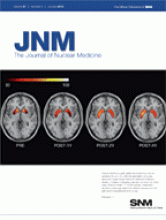TO THE EDITOR: We read with interest the recent article by Iagaru et al. (1) that examined the feasibility of combined 18F-FDG and 18F-fluoride PET/CT in the management of patients with cancer. We congratulate the authors for their well-conducted study and would like to share our views on this promising approach. As mentioned by the authors, Hoegerle et al. (2) previously explored a similar approach with PET methodology in a prospective study that investigated 30 patients with various malignancies who underwent combined 18F-FDG and 18F-fluoride PET. The result was compared with that of the control group comprising 30 patients who underwent only 18F-FDG PET. These authors concluded that combined 18F-FDG and 18F-fluoride PET is an advanced metabolic imaging approach for the evaluation of cancer. There are certain obvious methodologic differences between the previous study and the present one: The previous study adopted PET, which was the predominant modality at that time, whereas the present study used PET/CT fusion imaging. In the present study, the same patients underwent separate 18F-fluoride PET/CT and 18F-FDG PET/CT and combined 18F-FDG–18F-fluoride PET/CT scans; that is, a total of 3 scans were performed on each patient, whereas in the previous study, 2 different patient groups were tested with 2 different scans. Though the first study was conducted in 1998, there was apparently no further endeavor until the present study, a decade later, to investigate the potential of this 2-in-1 dual-tracer approach to PET.
This thought-provoking approach raises certain important questions in a logical mind with regard to clinical applicability. The foremost obvious question is what the potential clinical indications will be for this approach. Defining the clinical situation in which the combined study will be of advantage over conventional 18F-FDG PET/CT or the 18F-fluoride technique appears to be of great importance. One can foresee promise for skeletal metastatic lesions, an application in which 18F-FDG PET demonstrates limited sensitivity. This application would include detection of osseous metastatic lesions in malignancies such as prostate or thyroid carcinoma. However, one must be aware of certain practical issues that might be associated with the combined 18F-FDG–18F-fluoride approach: first, one must remember the great potential of 18F-FDG in detecting and evaluating marrow metastases—a potential that rivals MRI in this context (3). It is perceivable that this advantage of 18F-FDG might be compromised in the combined 18F-FDG–18F-fluoride approach when there is normal skeletal uptake of fluoride that can obscure an abnormal 18F-FDG–avid focus in the bone marrow. Also, as observed in this pilot study, therapy with bone marrow–stimulating agents can induce intense 18F-FDG uptake in the skeleton that can hamper the interpretation of 18F-fluoride uptake. In addition, after administration of systemic or hormonal therapy, the osseous flare with 18F-fluoride may prove to be a confounding factor in the assessment of therapeutic response in 18F-FDG–concentrating skeletal lesions. The metabolic flare with 18F-FDG after systemic or hormonal therapies, on the other hand, is relatively short-lived and is an advantage in treatment monitoring with 18F-FDG PET (4). These factors are important in routine clinical PET and must be considered before this approach can be recommended in this scenario. As the authors rightly indicate, the use of skeletal 18F-fluoride uptake as a surrogate for anatomic localization of an abnormal focus of 18F-FDG is no longer valid in the present era of PET/CT fusion imaging. The above having been said, the combined approach, if used appropriately, can be of substantial value in certain specific situations, and these potential clinical indications for this powerful technique must be defined precisely by the user community to render this approach clinically viable and efficient.
Footnotes
-
COPYRIGHT © 2010 by the Society of Nuclear Medicine, Inc.







